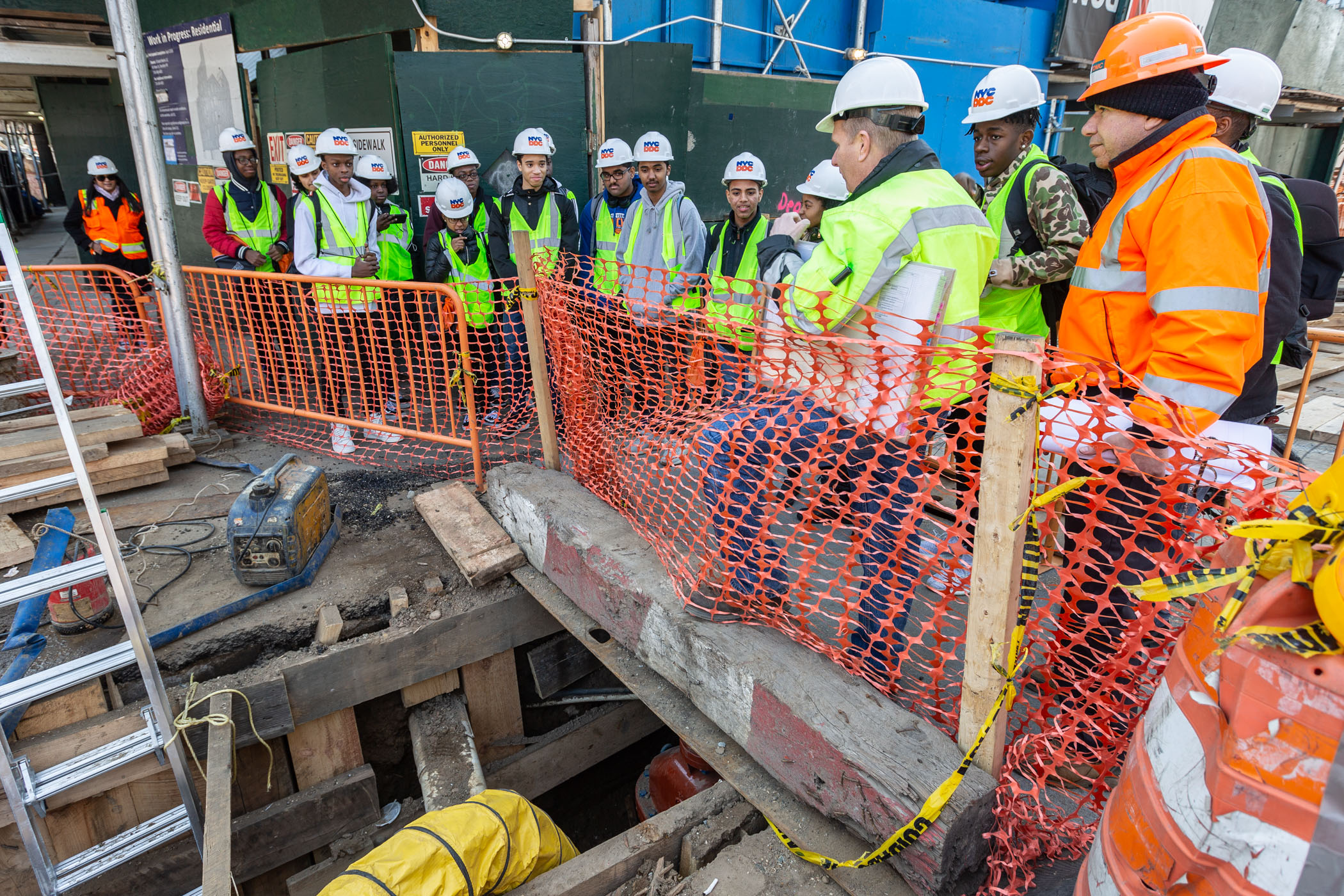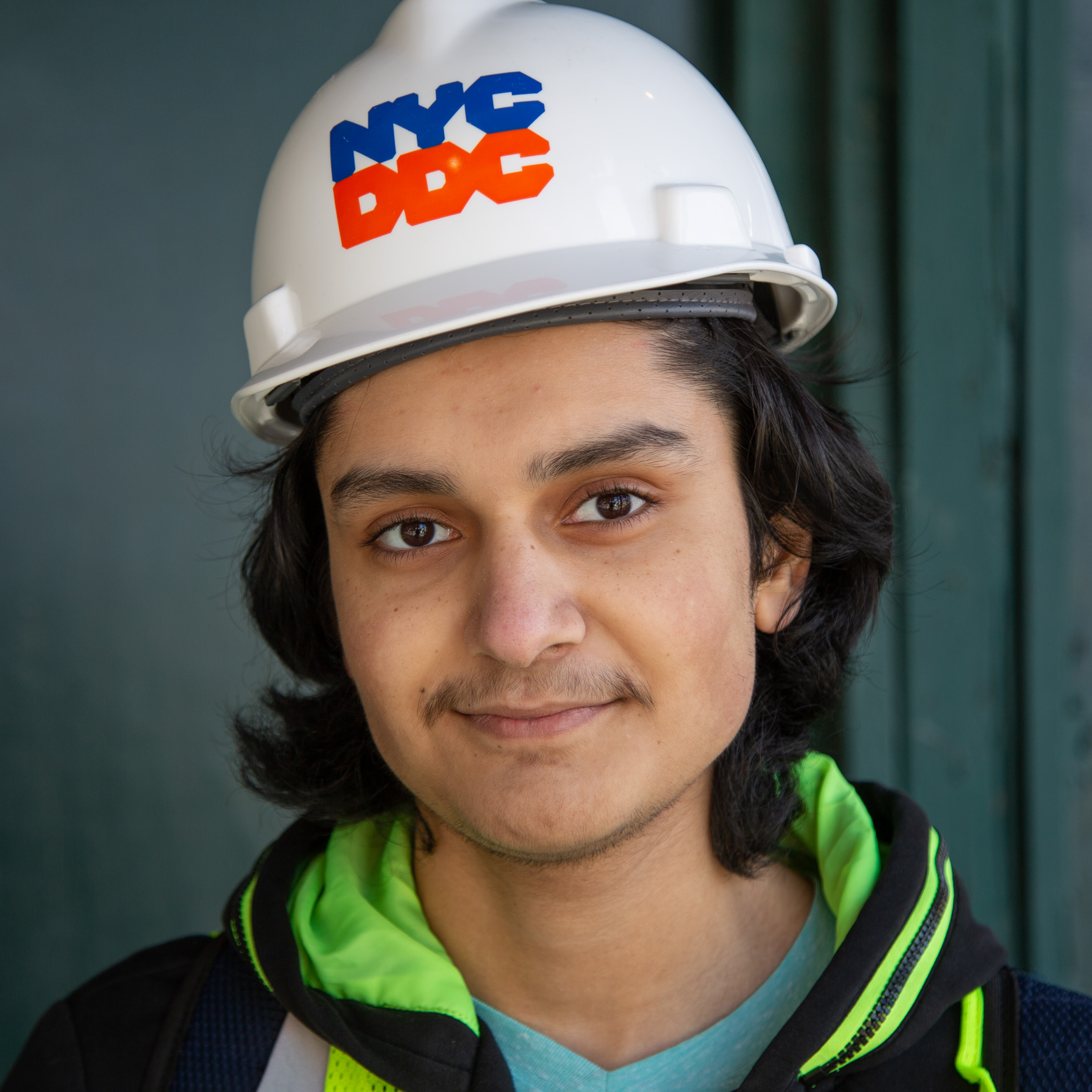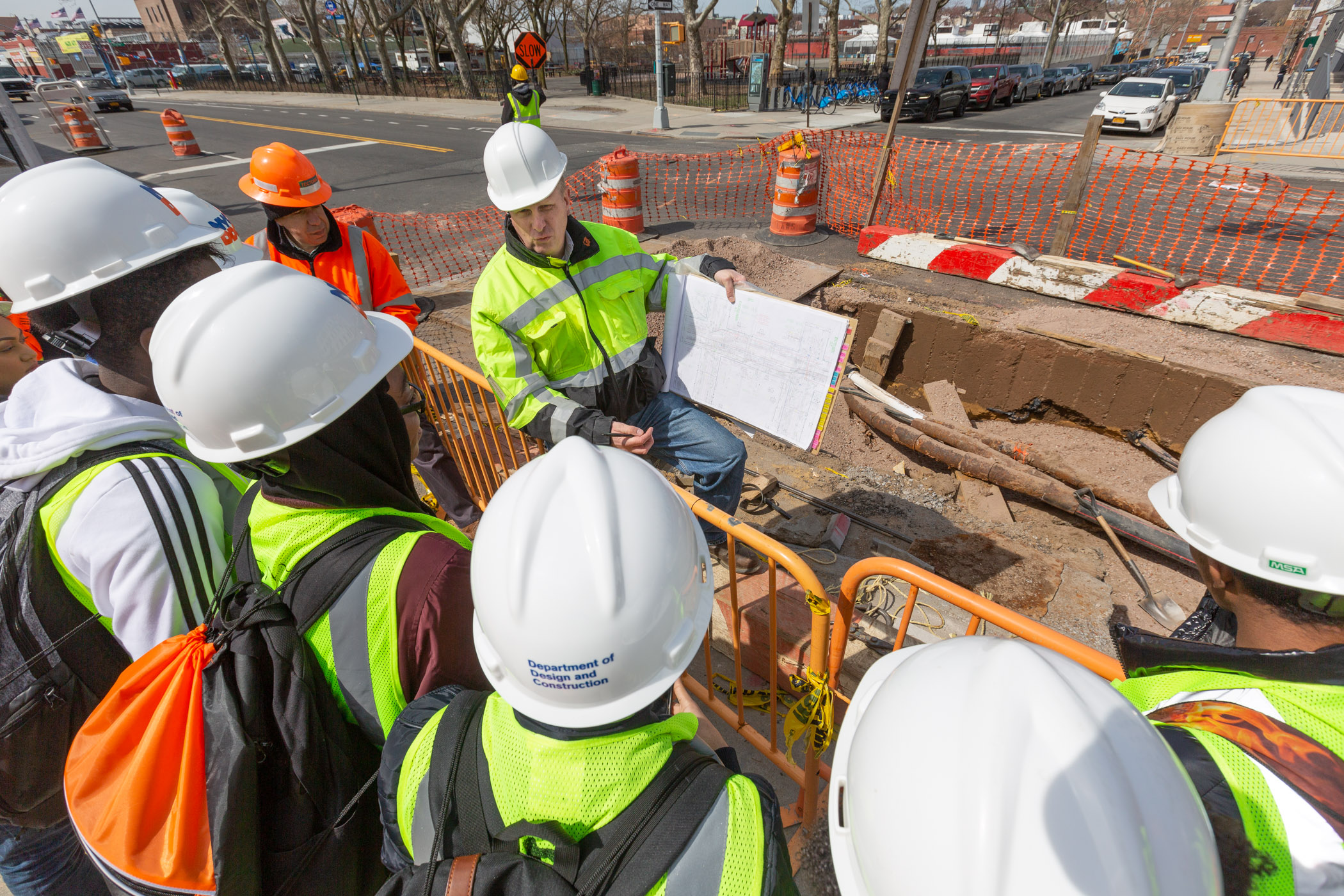
 Department of Design and Construction311
Department of Design and Construction311 Search all NYC.gov websites
Search all NYC.gov websites
Students From City’s Polytechnic High School See How DDC is Helping the Gowanus Canal
April, 2019
Fourteen students from Polytechnic High School of Engineering, Architecture and Technology in Brooklyn toured an infrastructure project that’s helping to clean up the Gowanus Canal, on a tour arranged through DDC’s Neighborhood Infrastructure Curbside Education (NICE) program. NICE provides students with instructional and educational resources on how DDC utilizes the latest construction and equipment technologies to deliver drinking water and then remove waste and stormwater from underneath the City’s streets.
The $26 million Gowanus project will improve local drainage and also install a new sanitary sewer system in the neighborhood. The existing combined sewers will then be converted to storm sewers, eliminating the overflow of raw sewage from combined sewers into the Gowanus Canal. It will also upgrade and make more resilient other existing infrastructure, by rebuilding streets and replacing older water mains and fire hydrants.
The project, which is being managed by DDC for the NYC Department of Environmental Protection (DEP), is scheduled to be completed in winter 2021.

“The NICE program brings students together with DDC professionals to give them real world exposure to how the City works,” said DDC Commissioner Lorraine Grillo. “DDC is proud to provide middle school and high school students with resources that help them gain a better understanding of the environment, of the City’s infrastructure and of potential future career opportunities.”

“Today I learned about how the private utilities are being moved to make room for new sewers, and the important role of communicating with the public,” said sophomore Muneeb Bangash. “I enjoyed watching the workers use the crane to place the water main in the ground. I will definitely be walking around this area more to see the progress leading to the final restoration. This program lets you see work in action, something you don’t really get elsewhere.”

“The NICE Program is beneficial to students because it gives them a lot of exposure to engineering and construction,” said Field Operations Manager Robert Cook. “It’s a challenging career field and it’s a good one to get into because there are a lot of opportunities. This infrastructure project was great for the students to see because there’s a lot of flooding in the area, especially during high tide storms. A lot of people have gotten bulkheads (barriers) around their front doors and along their basement access to keep the water from causing property damage.”
“Programs like NICE are the right type of educational tools, giving hands-on experience in the students’ field of interest,” said Resident Engineer George Hanna. “When I was in high school I attended a tour with a similar structure to the one we did today, and it helped me make the decision to study civil engineering in college.”
“I was glad to inform the students about the importance of communicating with the public in the area surrounding the project,” said Community Construction Liaison Jose Moreno. “There’s a lot of coordination that goes on to minimize the impact to the public when a water shutdown is required for construction, especially with NYCHA and several hotels nearby.”
Nearly 500 students from 22 schools have taken NICE program tours since 2006. In the coming weeks, students from New York University (NYU) and the Urban Assembly School of Design & Construction will visit the DDC project on Worth Street in Manhattan to see the construction roads, sidewalks, curbs, sewers and water mains.


